MLA Candidate, USC 2023
Portfolio 2017-2022

Email: eliana114@msn.com
Phone: 1.310.903.2439
Eliana M. Ramriez



Projects
Other Work
 1. Elysian Park - Near Dodger Stadium
1. Joshua Tree - Information Plaque
4. MacArthur Park - Westlake
4. Itteration Models
2. Crocker Plaza - USC
2. Hand Drawn Planting Plan
5. Community Garden and Housing - Jefferson
5. Bridge
5. Organic and CNC Chair
3. Fire Station - Mulholland Rd
3. Plaster Cast
6. Haboobs and Tule Fog - Central Valley
6. Toy / Play Chest
6. Skateboard
1. Elysian Park - Near Dodger Stadium
1. Joshua Tree - Information Plaque
4. MacArthur Park - Westlake
4. Itteration Models
2. Crocker Plaza - USC
2. Hand Drawn Planting Plan
5. Community Garden and Housing - Jefferson
5. Bridge
5. Organic and CNC Chair
3. Fire Station - Mulholland Rd
3. Plaster Cast
6. Haboobs and Tule Fog - Central Valley
6. Toy / Play Chest
6. Skateboard
Table of Contents
1. Elysian Park
USC: Fall 2020
Alexander Robinson
Elysian Park is a popular park used by many people in Los Angeles. It is located around The Dodger Stadium.
The project focused on creating specialized areas in the park for people to gather during the pandemic.
The inspiration behind the project was to create hidden nooks of varring size to grant people the ability to choose how much interaction they want to have with others.

Visiting Elysian Park granted the ability to create a photo-works document, of what the area felt like during a specific moment in time.

While the pandemic was occuring all around the world, California was also dealing with many raging fires, which lead for the park to have a deep yellow-orange tint to it.
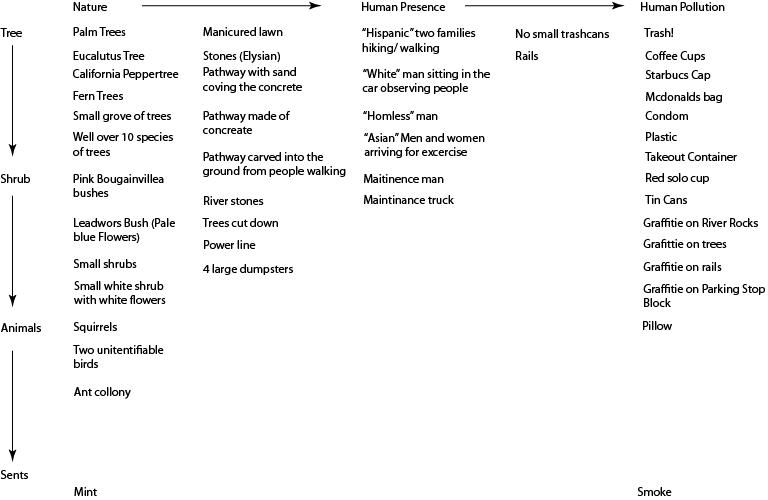 Photo-work
Photo-work




N N
Mixed-media Plan
Hidden Nook Terrace Section
Line Work Plan
Dual Terrace Section
Models
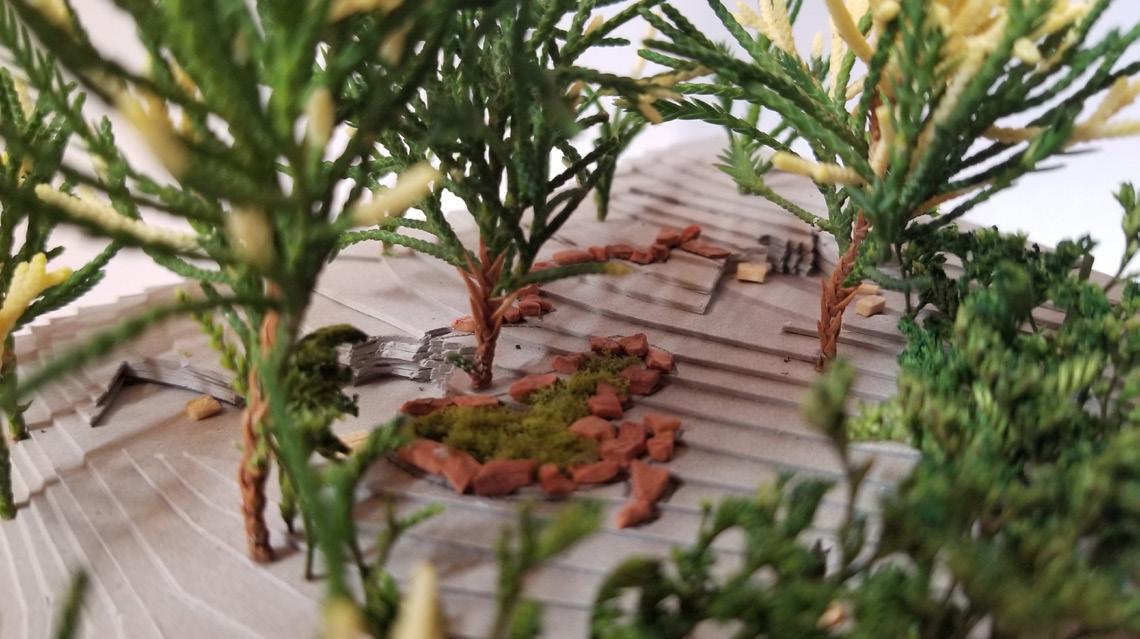






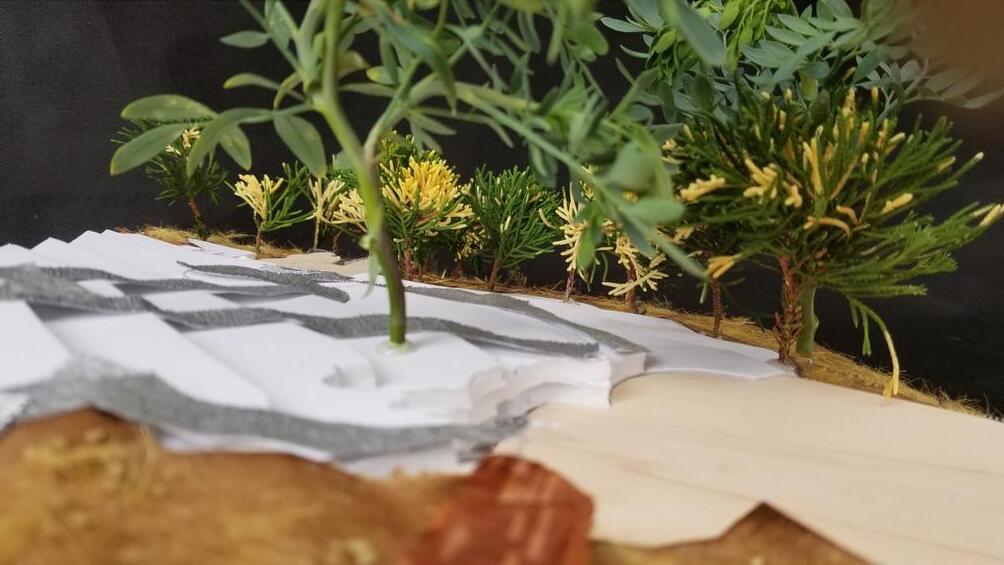
2. Crocker Plaza
USC: Fall 2020
Alexander Robinson
Crocker Park is a plaza located withing the main campus at USC.
The project is focused on re-designing the plaza using already existing landscapes from completely natural, to designed, to industrial.
The inspiration of the project comes from the Baldwin Hills Oil Pump jack Field. Given the organic mounds and vegetation that have formed through trucks compressing the ground, as well as the connection USC has to oil, I found it intriguing.
Creating an artistic representation of the pump jacks, as well as the mounds, and tire tracks allows for visitors to be curious about the oil industry as well as USC’s connection to it.







Sketch Model
Final Model



N N
Section Expressing Mound Depth
Rendered Crocker Plaza Plan
Textured Line Work Crocker Plaza Plan




Section Expressing Mound Depth
Renders Walking Through Reresentative Oil Fields
Fire Station was a project located on Mulhuland Rd, to design a fire station for the surrounding community which was severly impacted by the Woolsy Fire.

The focus of the project was to create a fire station that allowed for it to be a train station, community refuge, and quarters for fire fighters to stay.
The inspiration came from cross shaped wave breakers, as they can be rooted deep into the ground for stability. The shape also grants the ability for restabilization and reintegration of habitat.
3. Fire Station
Render of Vegetation Growth Diagrams Levels of Fire Station Through Plans and Section
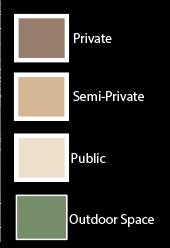











4. MacArthur Park
USC: Spring 2020
Takako Tajima
MacArthur Park is located near Westlake. Over the semester the class was asked to re-imagine the possibilities of MacArthur Park given its long interesting history.

When visiting MacArthur Park, I discovered the urban fishing culture that existed not just in LA, but this park specifically. There is a legendary 50+ lb carp that lives in the waters of MacArthur Park Lake.
This lead to the focus and fascination of how to produce a better lake for fish but also another body of water that people could use and swim in like was once possible.
N
The Fish Calender below is to help people understand what the best depth is to catch certain type of fish as well as what their seasonality. The pink bars below are when each type of fish are in breading season. The numbers to the right are the temperatures that are ideal for the fish to thrive.
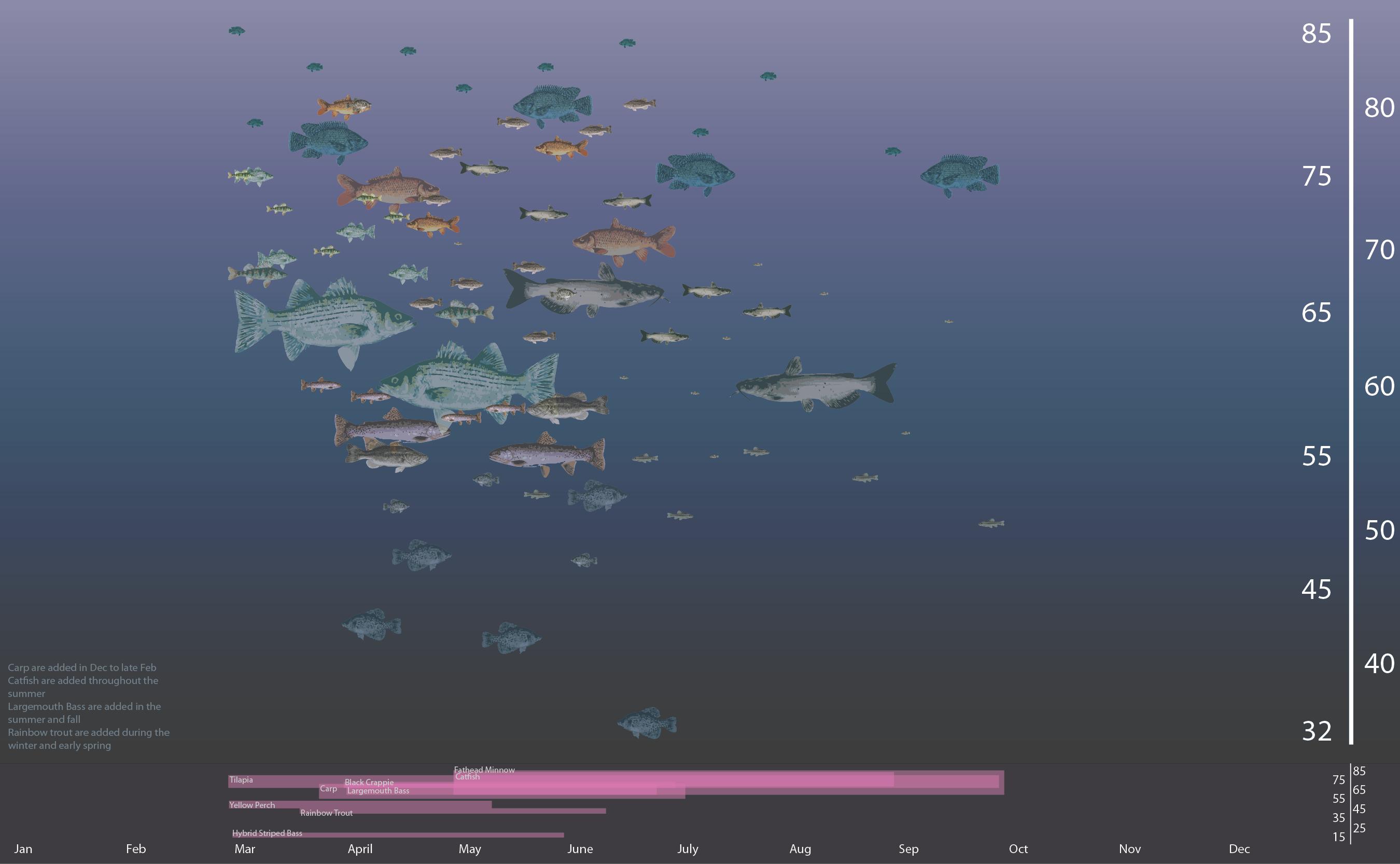


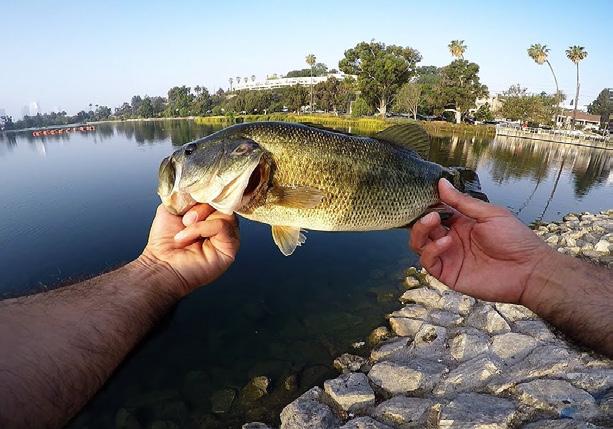 Fish Calender
Fish Calender




Top Section Lake Connection Middle Section “Pool” Lake
Section “Fishing” Lake
Feature in “Pool” Lake
Filtration Detail
Bottom
Water
Water





 Walking Path to “Pool” Lake
Boardwalk to “Fishing” Lake
Walking Path to “Pool” Lake
Boardwalk to “Fishing” Lake
Contour Model
5. Community Garden and Housing

USC: Fall 2022
Fare Nixon
The site the class was working with was once a Oil Extraction Location, situated off of Jefferson near USC.
Throughout the semester the class was tasked with using different types of remediation for the soil to be better than base level remediation standards.
Holding an impromptu Community Engagement allowed for me to learn more about the community members wants in regards to the question I proposed in regards to a community garden and community kitchen.
Finally creating a planting plan and Harvest Calendar allowed for me to create programmatic recipe gathering plans.
The site is located on a previous Oil Dilling Site, which lead to research on the ways of re-mediating the soil. Given the hopes for the site the safest form of remediation that will last for generations is a combination of Thermal In-Situ Remediation and Phyto Remediation. Thermal In-Situ Remediation allows for 100’ deep remediation that can break down the residual chemical toxins in the soil

Thermal Remediation Diagram


Phytoremediation Section Root Depth
Sketch Vegetation Design

Crop Planting Plan




Engagement Results
Housing Typology



Oil Well Testing

Vegetable Beds and Cooking Area
Harvest Gathering table and Main Path

Community engagement allowed for me to collect recipes from people. While talking with people they were excited to share recipes but also expressed how they would love a community garden that they could learn to cook together or to share recipes and create a network.


I created a crop harvest calender to help understand when pants are at peak yield or when to anticipate the right time to harvest.
It can help guide residents and community members that are beginning to learn how to grow crops when to expect to harvest.
Crop Harvest Seasonality Calender

These two plans help to demonstrate where specific ingredients are located to make a recipe that has been shared by community members.
The plan on the left shows one of the many paths that can be taken to collect the ingredients to make Nopales. All the plants are highlighted to show the location of all the ingredients, as well as the many stops that can be made while gathering the ingredients. The plan on the right show the extra optional ingredients that can be collected to add more to the Nopales Recipe.
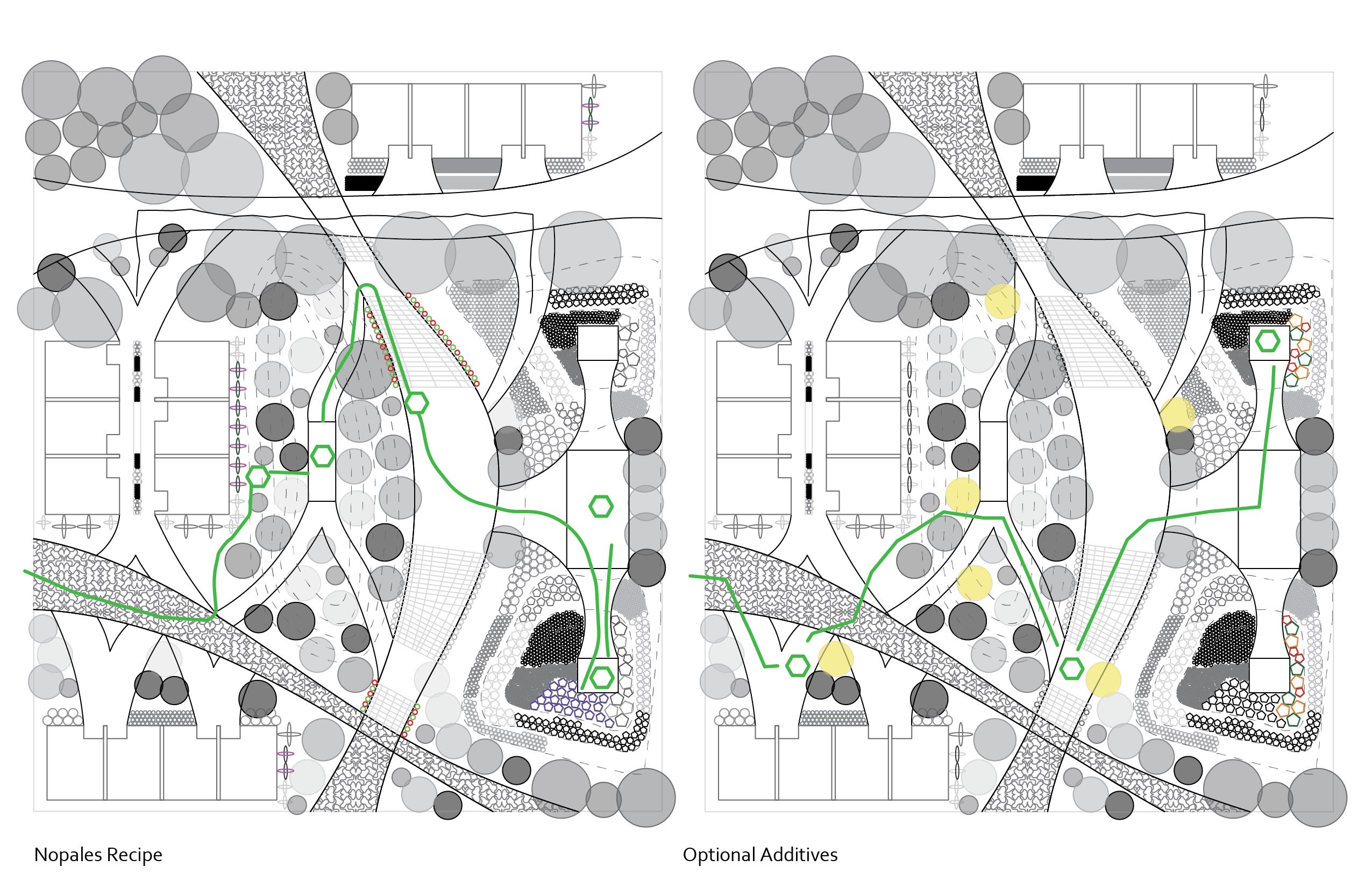
N N
6. Haboobs and Tule Fog
USC: Spring 2022
 Aroussiak Gabrielian
Aroussiak Gabrielian
Over the semester I researched the importance and impact of Haboobs. Haboobs are sand and dust storms that range from positive impact on the earth to negative that severely impact and harm lives.
From the research on Haboobs across the world it lead to a fascinating discovery of the Tule Fog, which for a short period of time was being synthetically impacted and created due to miniature dust storms leading to Ammonium Nitrate rising into the air and triggering the process of the Tule Fog formation.
Visiting the Central Valley allowed for me to follow the water that is still exisitng in the area. All the water I encounted was heavily channelized with exception of the water I saw at the Yokut Reservation.
I was surprised by the amount of animal species and ecology that was present even with the minimal amount and access to water. The most surprising part was the amount of wells and the ways of retaining water that either for agriculture or recreation.



Photo-work
Renew Cool Tule
Historically the Tule Fog can form in the matter of 2-3 hours and last from 3-6 hours to 3 days. Currently due to the rise in temperatures globally and the shrinking of water sources the Tule Fog has become a rare occurrence.


“You Surely drained our lake dry, but its mists will still rise up from the Tule Reeds and haunt you forever”
- Old Yokuts Curse
Vegetation historically allowed for Tule Fog to form naturally and benefited the region not just with temperatures but also with retaining water in the soil.

Vegetation currently shows the strain the soil is being through. Prior to the clean air act due to the particles rising up in the air created a synthetic Tule Fog. Post clean air act the Tule Fog has become a rare occurrence.

Redesigning for the Fog
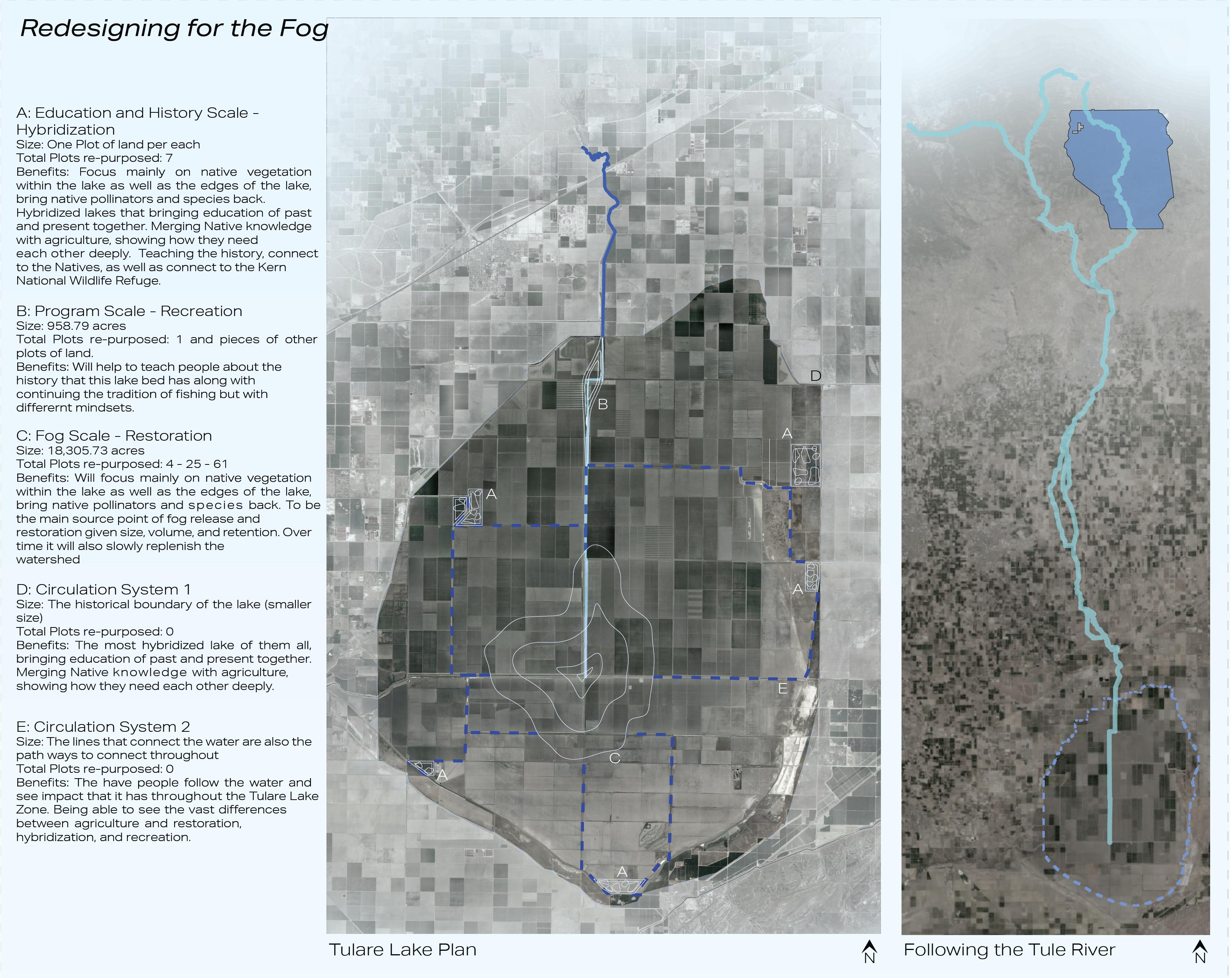
Other Work
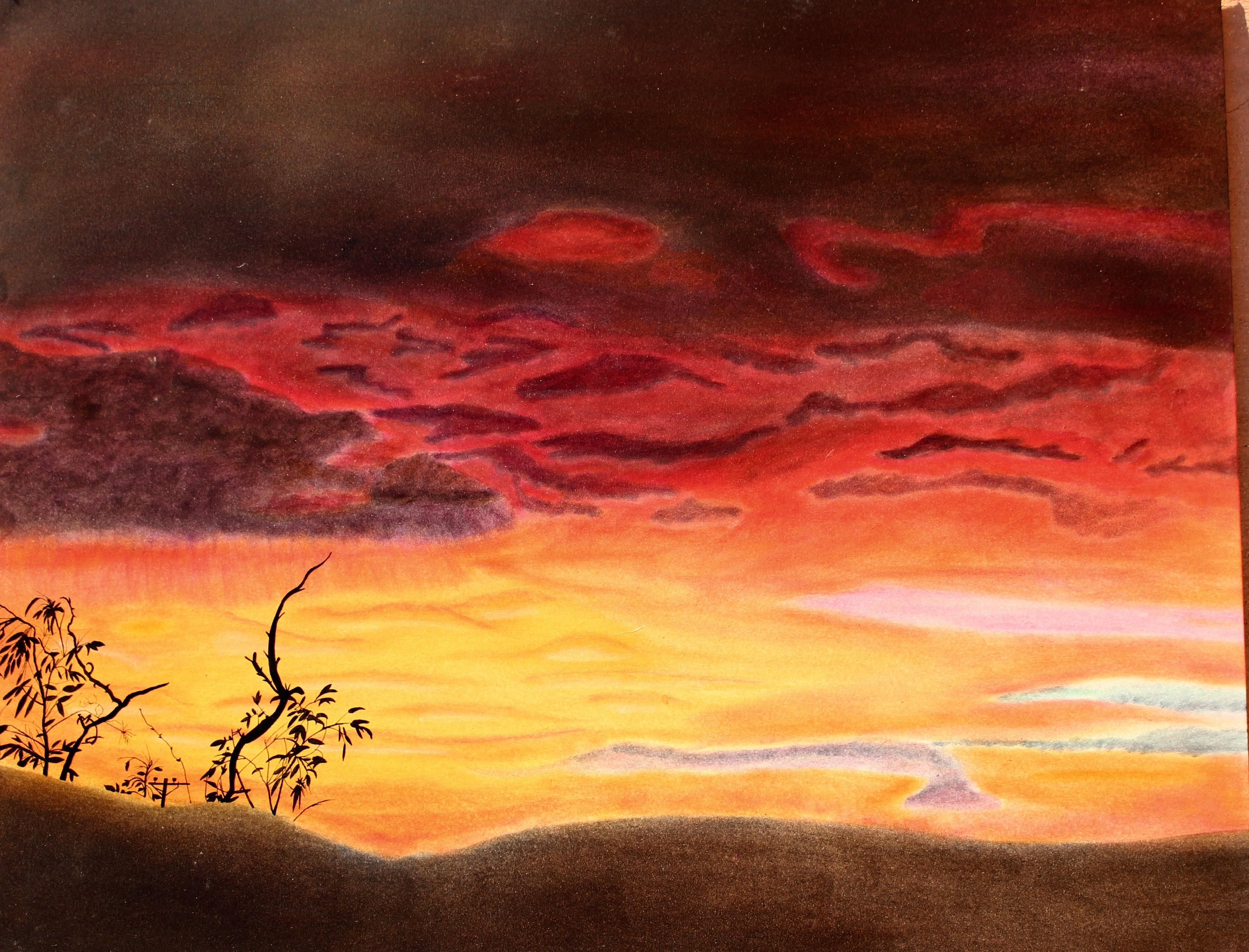
1. Joshua Tree - Information Plaque
2. Hand Drawn Planting Plan
3. Plaster Cast
4. Itteration Models
5. Bridge 5. Organic and CNC Chair
6.
6. Skateboard
Toy / Play Chest
1. Joshua Tree - Information Plaque
Otis: Fall 2018
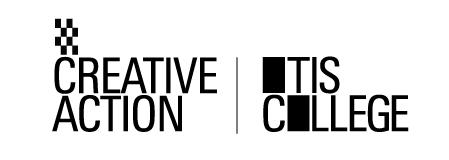
Joshua Tree National Park
Joshua Tree. A wonderful a factory worker, and Annie families the opportunity

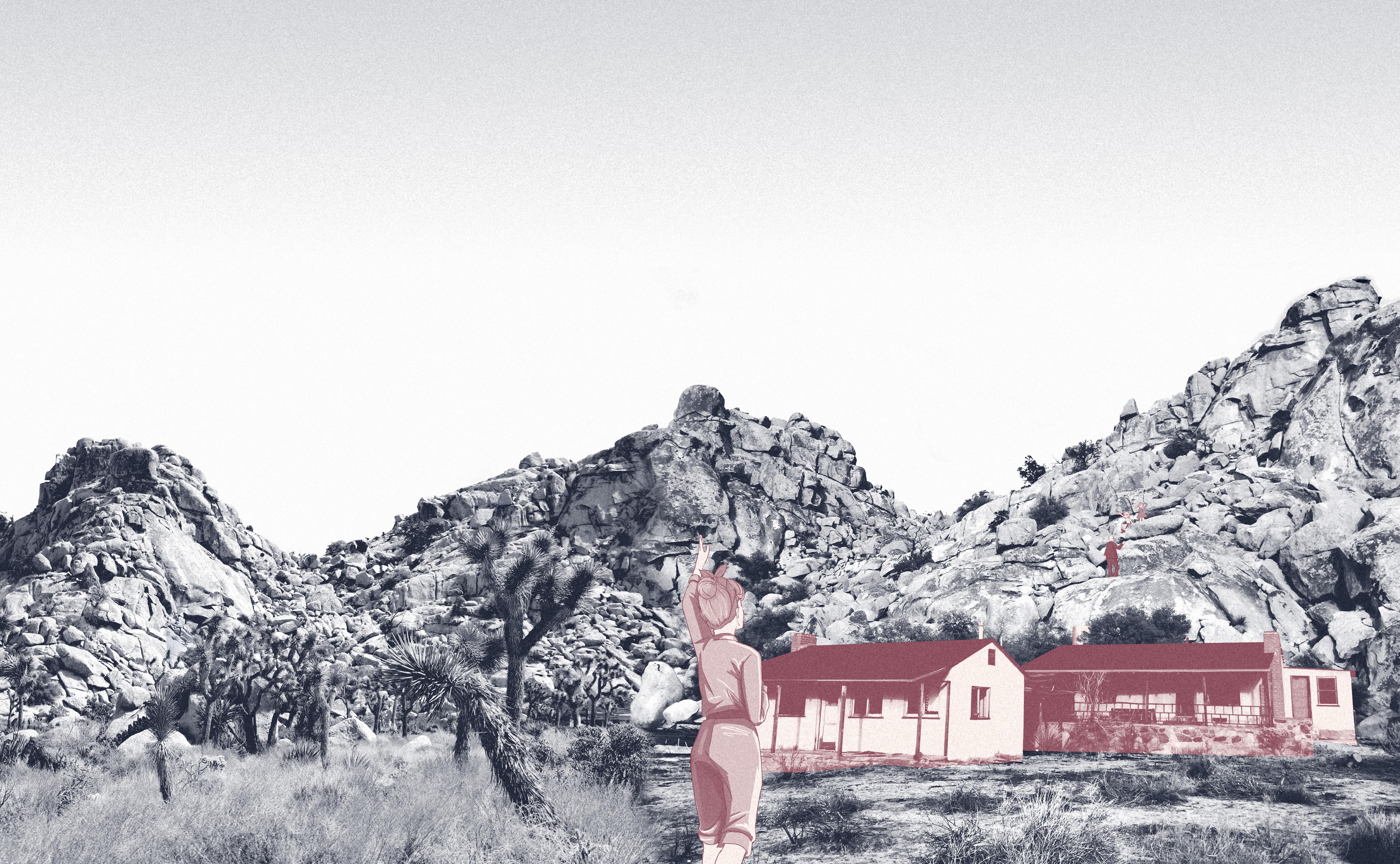
National Monuments to
As a class divided up into small groups the class was tasked to create Way-side Plaques or Information Plaques for visitor of Joshua Tree National Park.
Cases’ built their home from the Cases enjoyed cool winter the family gathered was originally a privately the park in 1976. Today, there
Visiting the Case House allowed me to understand the layout of the house to be able to recreate a plan of how the house was built, as well as get a sense of the Case family that once lived there, to help tell their story.

Home away from home...
Camping and ranching are not the only activities people have partaken in Joshua Tree. A wonderful example is the Case house which was purchased in 1954 by Arthur Case, a factory worker, and Annie Case, a teacher. After WWII, the booming economy gave middle class families the opportunity to expand to places outside of the city. Many people had started to visit National Monuments to reconnect to nature.
Going from Alhambra to their scenic vacation home in Joshua Tree, the Cases’ built their home from the ground up, adding to it over time. Similarly to their nearby neighbors, the Cases enjoyed cool days on their back porch and warm nights on their sleeping porch. In the winter the family gathered around the fireplace that Mr. Case built of local stone. The Case house was originally a privately owned property within a national monument, which was later gifted to the park in 1976. Today, there are still many private inholdings throughout Joshua Tree National Park.
The Case House Sleeping Porch Living Fire Place Living Fire Place Up Up Up Up
Joshua Tree National Park National Park Service U.S. Department of the Interior
The Case House Sleeping Porch Living Fire Place Living Fire Place Up Up Fire N
Symbol
Symbol Number# Scientific
Name
2. Hand Drawn Planting Plan
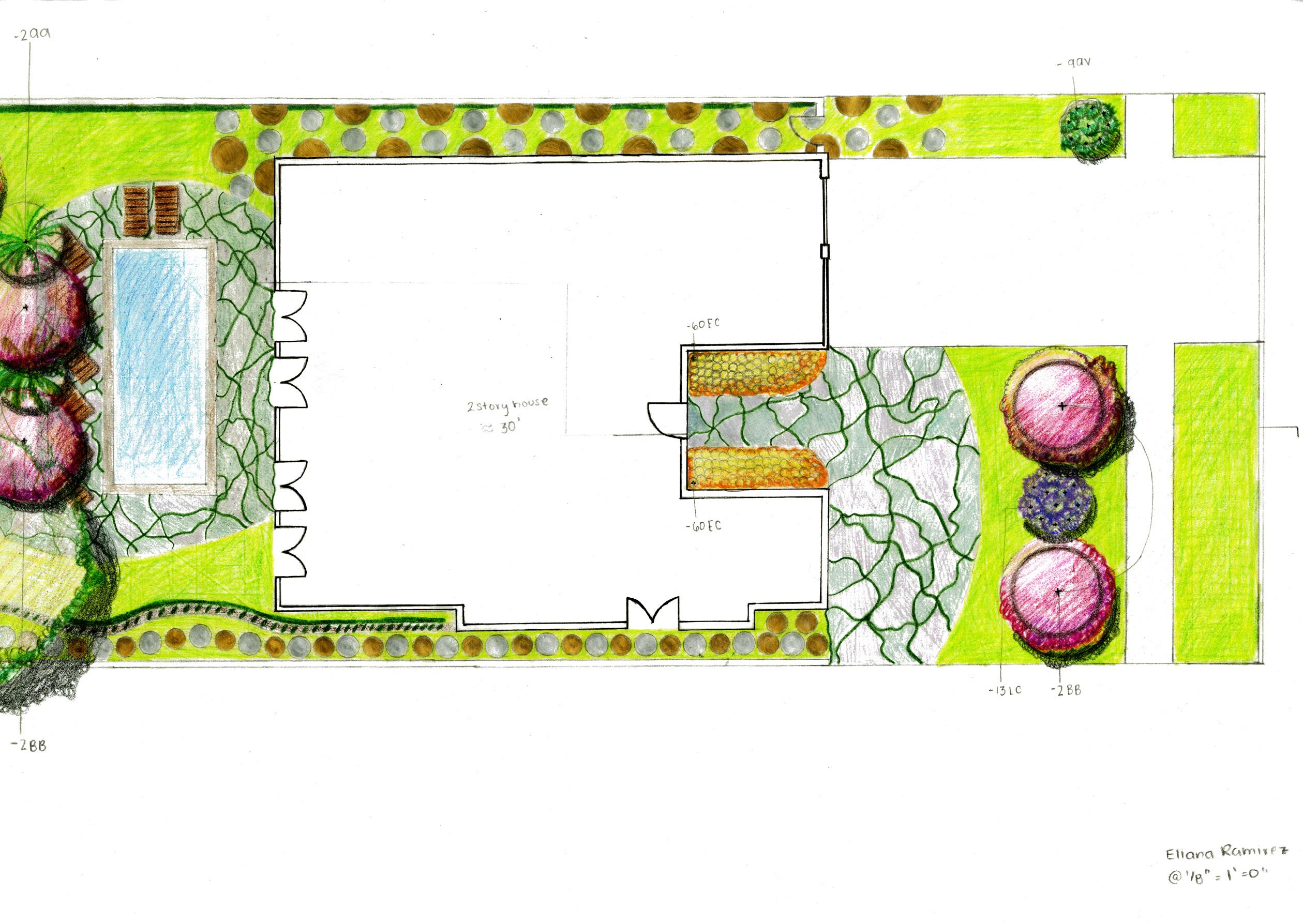
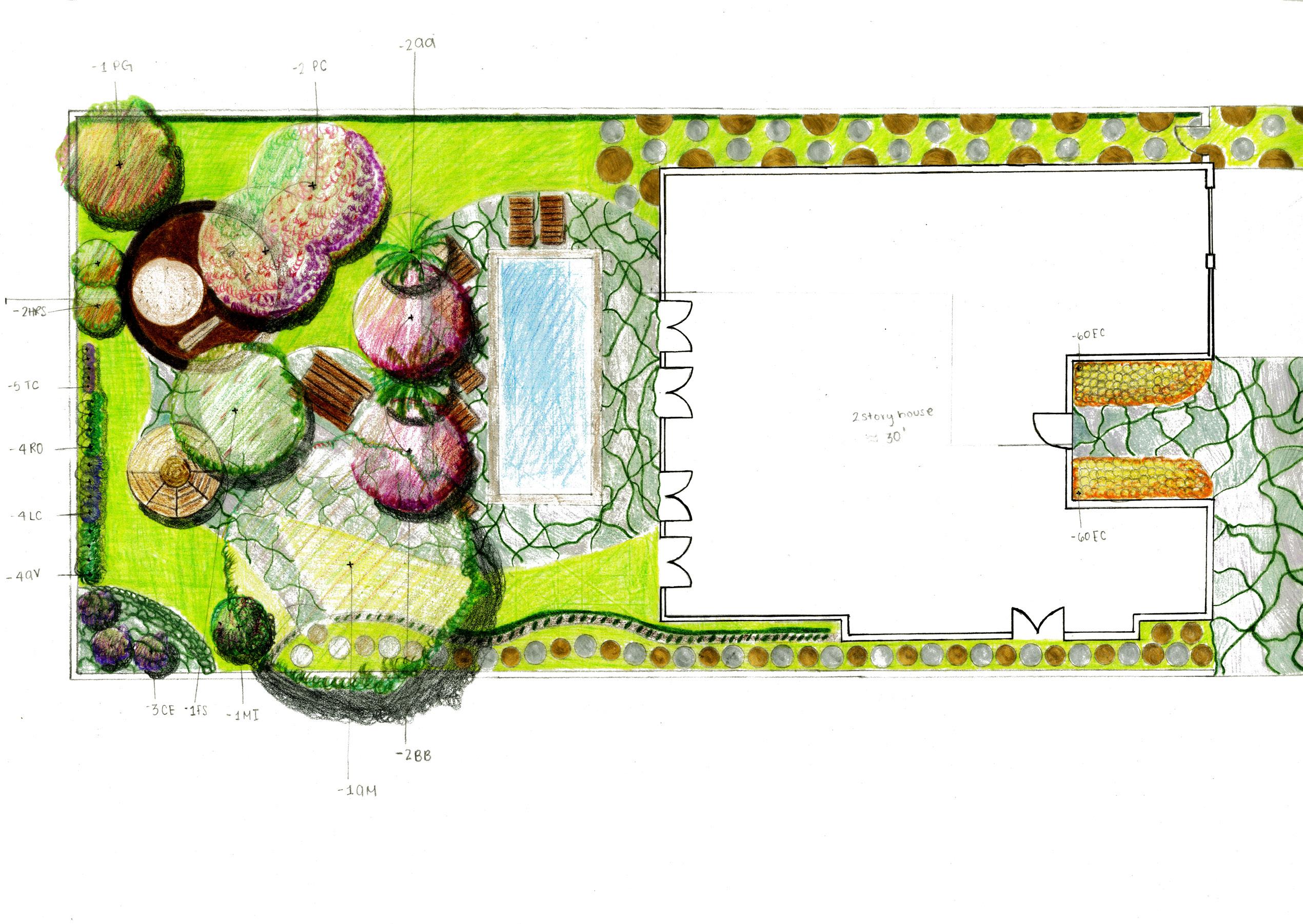
Otis: Spring 2017
Tracy Johnson
Colocasia esculenta Eschscholzia Californica
Pomegranate
Symbol Number# Scientific
Name Common
Name
Symbol Number# Scientific
Name
PG 1 Punica
granatum
PG 1 Punica
granatum Pomegranate
PG 1 Punica
granatum Pomegranate
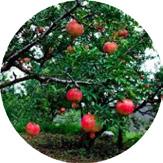
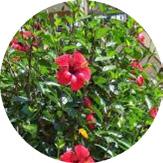
1
MI 1 Mangifera
indica Mango
MI 1 Mangifera
indica Mango
MI 1 Mangifera
indica Mango
LC 17 Lacandula
Canariensis Lavender
LC 17 Lacandula
Canariensis Lavender
AA 2 Archontophoenix
alecandrea Palm
Trees
AA 2 Archontophoenix
alecandrea Palm
Trees
LC 17 Lacandula
Canariensis Lavender
LC 17 Lacandula
Canariensis Lavender

BB 4 Bauhinia
Blakeana Orchid
Tree
AA 2 Archontophoenix
alecandrea Palm
Trees
AA 2 Archontophoenix
alecandrea Palm
Trees
BB 4 Bauhinia
Blakeana Orchid
Tree
BB 4 Bauhinia
Blakeana Orchid
Tree
BB 4 Bauhinia
Blakeana Orchid
Tree
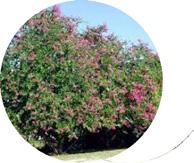
AV 13 Aloe
Vera Aloe
Vera
AV 13 Aloe
Vera Aloe
Vera
AV 13 Aloe
Vera Aloe
Vera
AV 13 Aloe
Vera Aloe
Vera

Feijoa sellowiana Hibiscus rosa-sinesis
Heuchera hybrid green spice
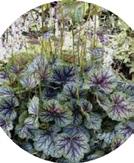
Canariensis


FS 1 Feijoa
sellowiana Pineapple
Guava
FS 1 Feijoa
sellowiana Pineapple
Guava
HRS 2 Hibiscus
rosa-‐sinesis Hibiscus
FS 1 Feijoa
sellowiana Pineapple
Guava
FS 1 Feijoa
sellowiana Pineapple
Guava
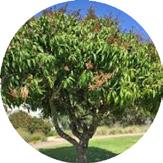
HRS 2 Hibiscus
rosa-‐sinesis Hibiscus
HRS 2 Hibiscus
rosa-‐sinesis Hibiscus
HRS 2 Hibiscus
rosa-‐sinesis Hibiscus
RO 4 Rosmarinus
officinalis Rosemary
RO 4 Rosmarinus
officinalis Rosemary
RO 4 Rosmarinus
officinalis Rosemary
RO 4 Rosmarinus
officinalis Rosemary


TC 4 Thymus
citriodorus Thyme
Mangifera indica Punica granatum Rosmarinus o cinalis Thymus Citriodorus Prunus Campanulata
TC 4 Thymus
citriodorus Thyme
Rosmarinus
officinalis Rosemary
TC 4 Thymus
citriodorus Thyme
TC 4 Thymus
citriodorus Thyme
PC 2 Prunus
campanulata Cherry
Tree
PC 2 Prunus
campanulata Cherry
Tree
TC 4 Thymus
citriodorus Thyme

CP seeds
PC 2 Prunus
campanulata Cherry
Tree
PC 2 Prunus
campanulata Cherry
Tree
Carex
pansa California
Medow
Sedge
CP seeds Carex
pansa California
Medow
Sedge
TC 3 Colocasia
esculenta
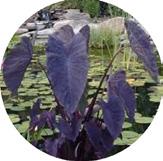
CE 3 Colocasia
esculenta Elephant's
ear
(Taro)
CE 3 Colocasia
esculenta Elephant's
ear
(Taro)
CP seeds Carex
pansa California
Medow
Sedge
CP seeds Carex
pansa California
Medow
Sedge
PC 2 Prunus
campanulata Cherry
Tree
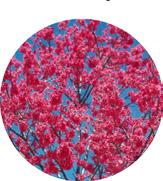
AM 1 Acer
macrophyllum Big
Leaf
Maple
CE 3 Colocasia
esculenta Elephant's
ear
(Taro)
CE 3 Colocasia
esculenta Elephant's
ear
(Taro)
AM 1 Acer
macrophyllum Big
Leaf
Maple
CP seeds Carex
pansa California
Medow
Sedge
EC 120 Eschscholzia
Californica Californica
Poppy
AM 1 Acer
macrophyllum Big
Leaf
Maple
AM 1 Acer
macrophyllum Big
Leaf
Maple
CE 3 Colocasia
esculenta Elephant's
ear
(Taro)
EC 120 Eschscholzia
Californica Californica
Poppy
EC 120 Eschscholzia
Californica Californica
Poppy
AM 1 Acer
macrophyllum Big
Leaf
Maple

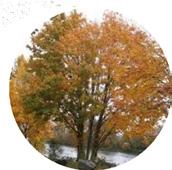
EC 120 Eschscholzia
Californica Californica
Poppy

Archontophoenix alexandrae
Blakeana
Vera Carex Pansa
Macrophyllum
Bauhinia
Aloe
Acer
Lavandula
The Case House Sleeping Porch Living Fire Place Living Place Up
Symbol Number# Scientific
Name Common
Name PG 1 Punica
granatum Pomegranate MI 1 Mangifera
indica Mango LC 17 Lacandula
Canariensis Lavender AA 2 Archontophoenix
alecandrea Palm
Trees BB 4 Bauhinia
Blakeana Orchid
Tree AV 13 Aloe
Vera Aloe
Vera FS 1 Feijoa
sellowiana Pineapple
Guava HRS 2 Hibiscus
rosa-‐sinesis Hibiscus RO 4
One of the projects the classed worked on was a hand drawn planting plan for a home loacted in Santa Monica to deepen the understanding of vegetation and strict parameters for viable landscaping.
Common
Name
Common
Name
Pomegranate
EC 120 Eschscholzia
Californica Californica
Poppy Number# Scientific
Name Common
Name
PG 1 Punica
granatum
MI 1 Mangifera
indica Mango
3. Plaster Cast
USC: Fall 2020
Aroussiak Gabrielian
Over the pandemic the class created plaster casts of an area near us to map the topography which could then be transformed into landscapes digitally through renders and other drawing methods.
The casts helped me to understand “level” looking grounds, contain micro topographies that can then be transformed into amazing projects. The casts also helped me to understand the different textures and to pay attention even more so to details.

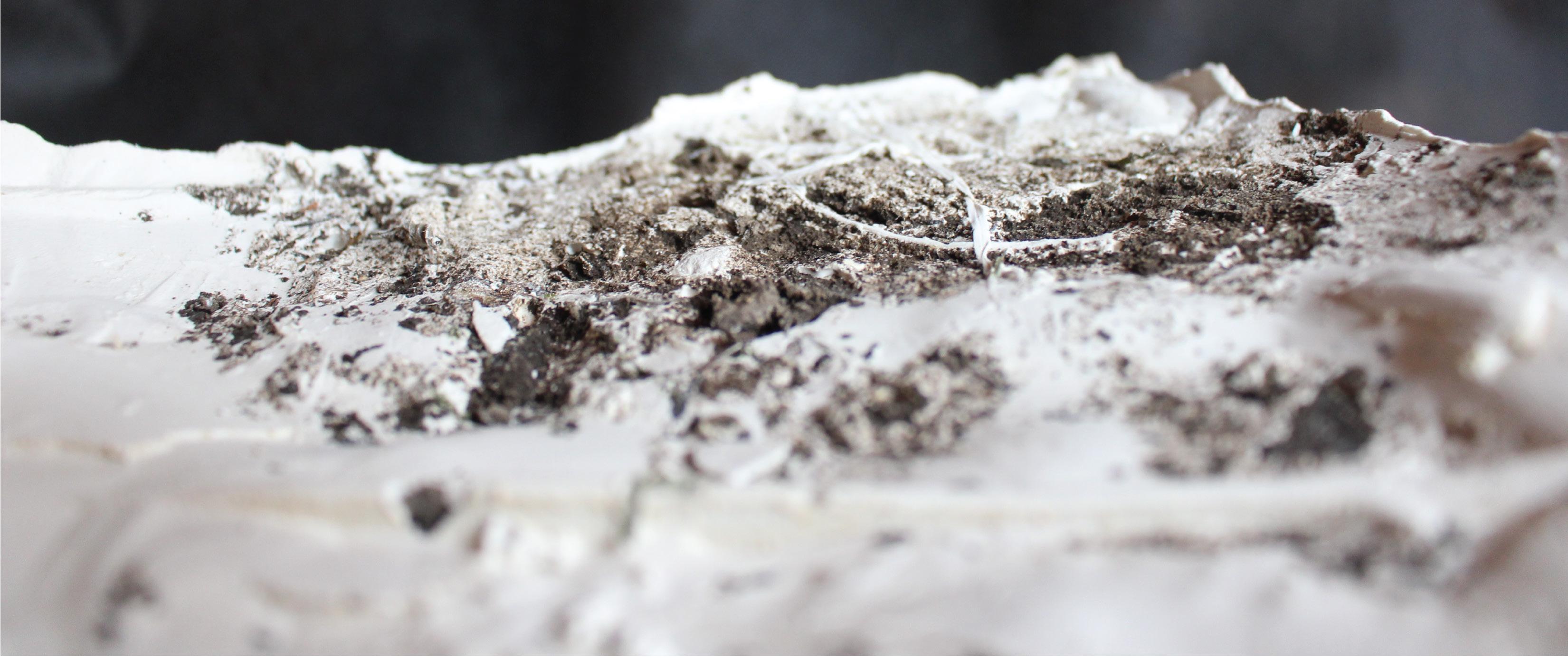
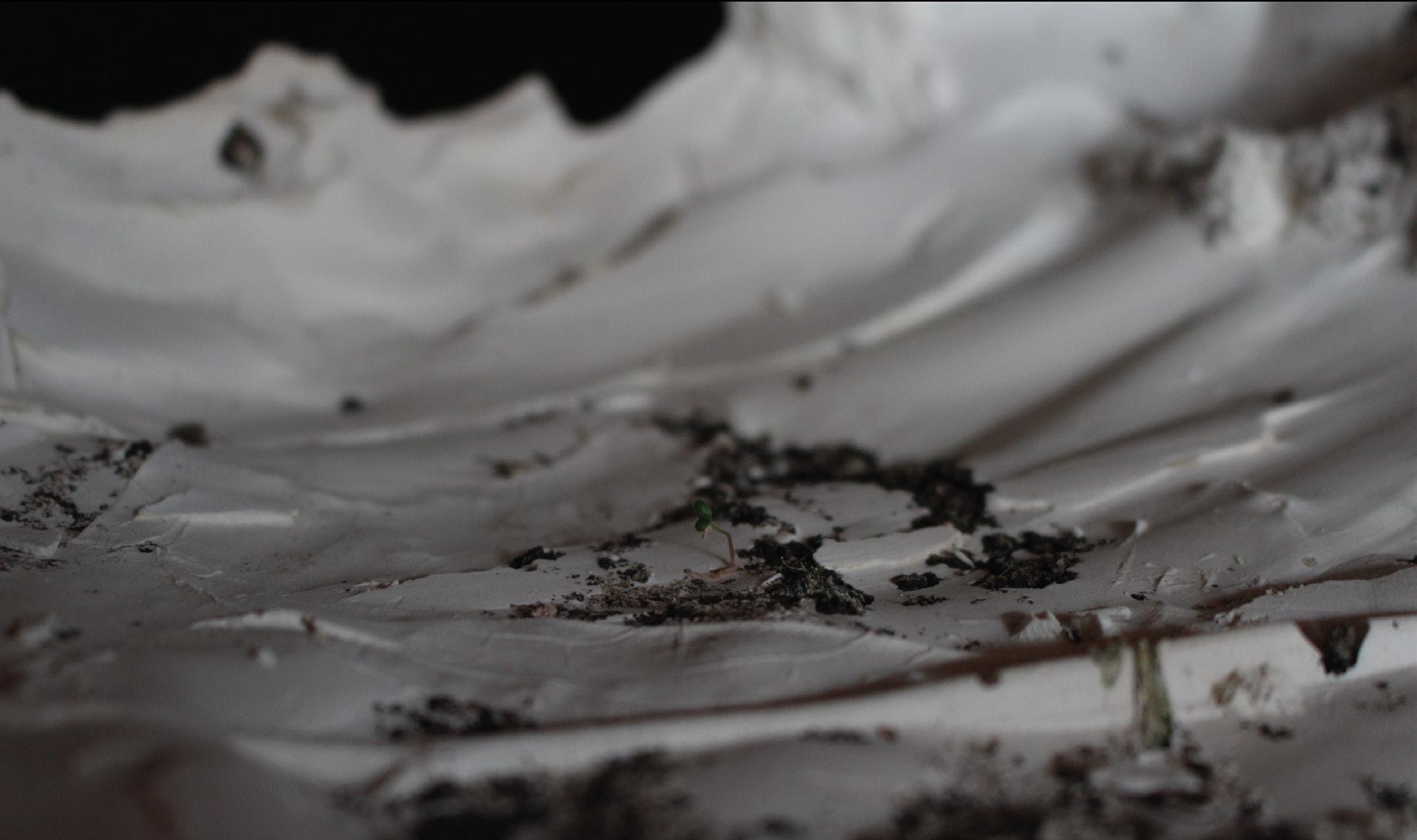

4. Iteration Models
USC: Spring 2021
Takako Tajima
The goal of this assignment was to break the students from the traditional way of thinking about model making, and the process of creating iteration of models in different ways.
I started of by using different mediums of material based off the phrase “Half and Half“





The first model played on the idea of hard and soft, using cotton balls and marbles to create an interesting dynamic of materials.

The second model played with negative and positive space as well as how it would effect light and shadows.
The third model played with addition and subtraction of material using clay. The areas that the clay was removed was then added to the opposite side.






5. Bridge
Otis: Fall 2018
Greg Kochanowski
While learning about structural integrity, the class was tasked with designing a bridge from scratch without researching how other bridges have been designed. The purpose was to understand what gives a bridge the most structural integrity besides materiality. We were only allowed to used 1/4” Balsa wood to create the bridge spaning 3’ at a width of 4”



6. Toy / Play Chest

Otis: Fall 2018
Andrew Fastman
Over the semester the class was tasked with designing a chest to store items as a way to explore fabrication.
The chest I designed was created to that it was reversible to take advantage of storing multiple items.
Being inspired by all the children in my family, I kept them and their parents in mind when designing the chest. The bottom shelf is perfect for books, art supplies, or even toys. The doors allow for smaller storage items, but it does not go all the way through so nothing gets stuck. The draw slides all the way though on either side to store longer items like crayons, colored pencils, markers, or anything else. The top is the largest storage available, beside the base, for anything kids can think of, it also has a mirror to peak curiosity. There is a cushion in the top storage as well if anyone decides to use the chest as a seat.



7. Organic and CNC Chair
USC: Fall 2022
Scott Mitchell
Over the semester the class designed two projects, a table and a chair, and built one as a test design. While both projects inspired me, the opportunity to use branches to create a chair using a combination of organic and cnc materials sounded like an interesting challenge.
All of the base, supports, and arms of the chair are branches that were cut from trees. I then cut them down to the length I desired and sanded and rounded out the edges. The cnc portion of the chair is the back rest and seat, the back rest has a cut out of the tree of life.
There is no hardware used throughout the chair, it is tied together with leather to give a rustic feel.

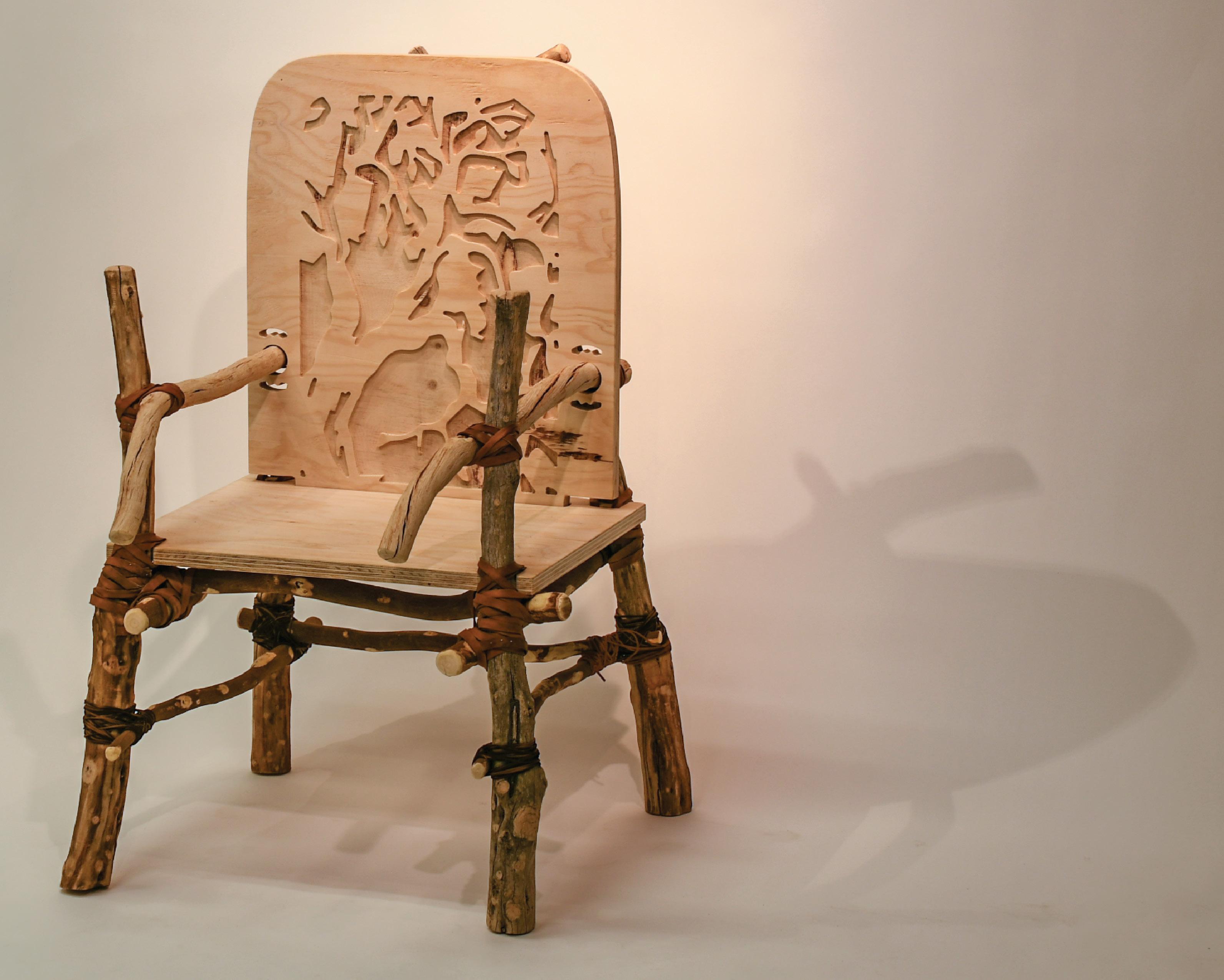
8. Skateboard
USC: Spring 2021
Rob Ley
Over the semester, during the pandemic the class was tasked with making skateboards as a way of exploring new ways of design and fabrication.
The skateboard is created with three layers of wood laminate that was bent, and glued together to create waves of varying size. The skateboard mimics the pattern of waves to relax the mind. The layers and the design allows for the skateboard to be study and able to withstand a lot of weight and pressure.
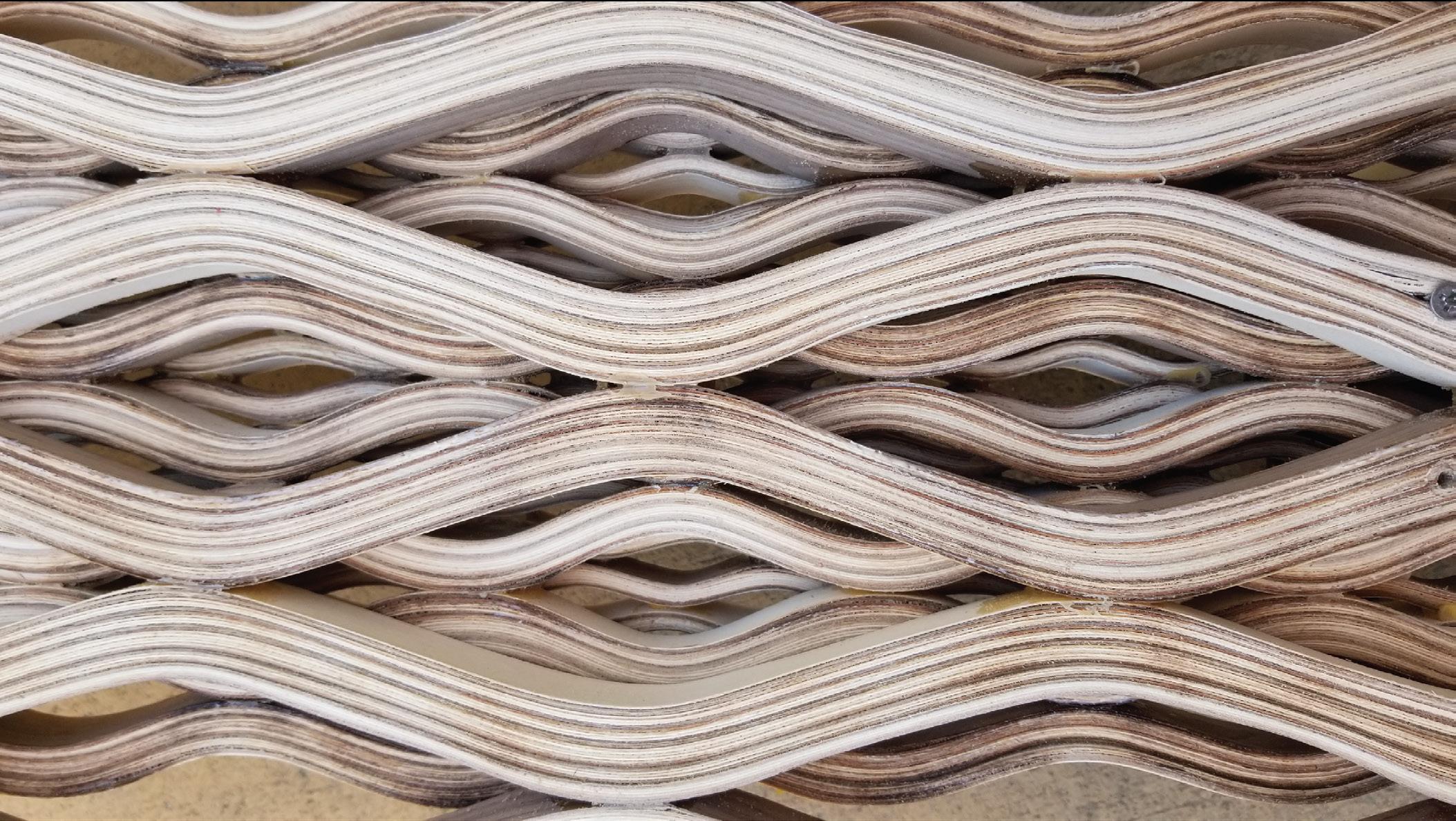
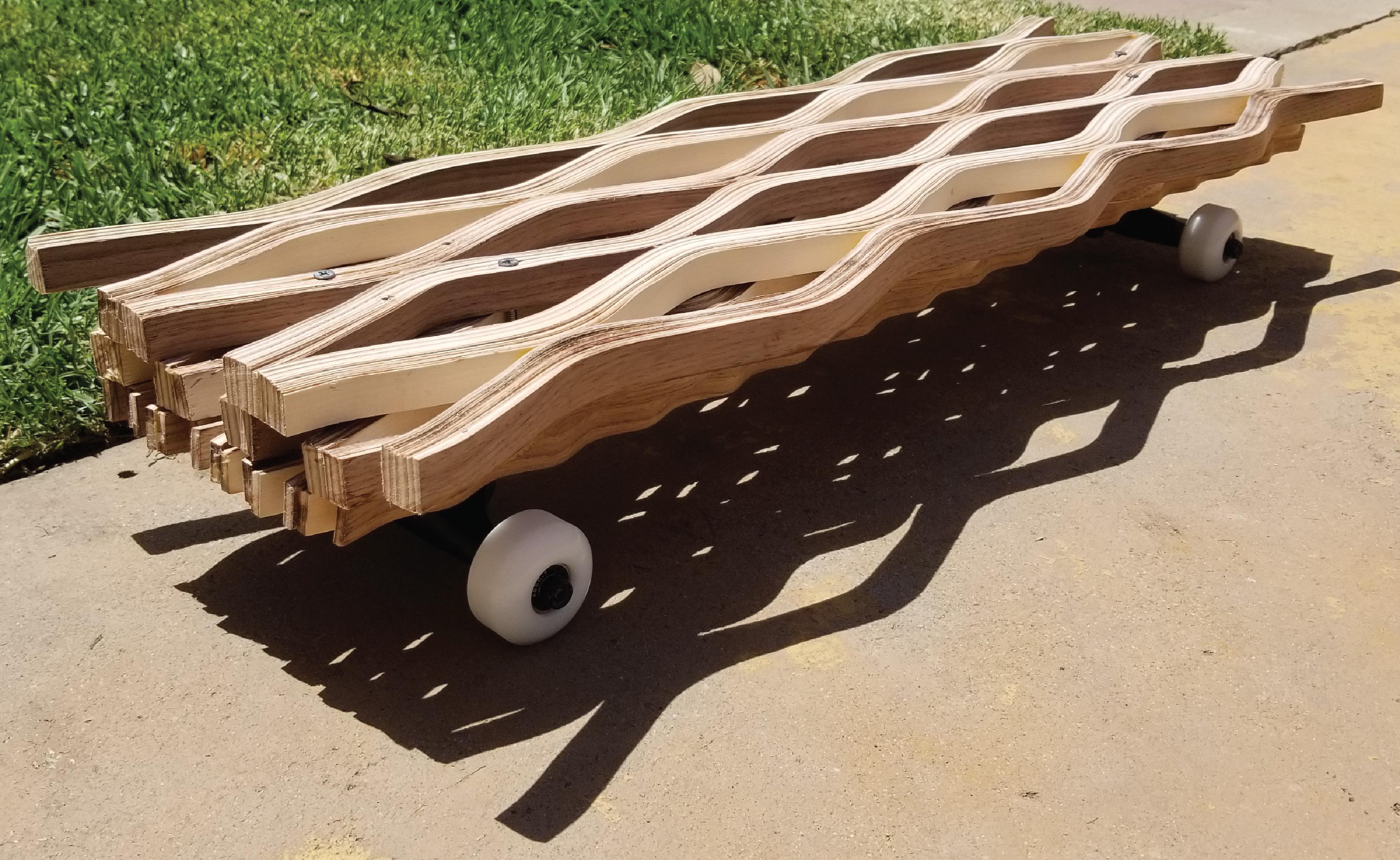
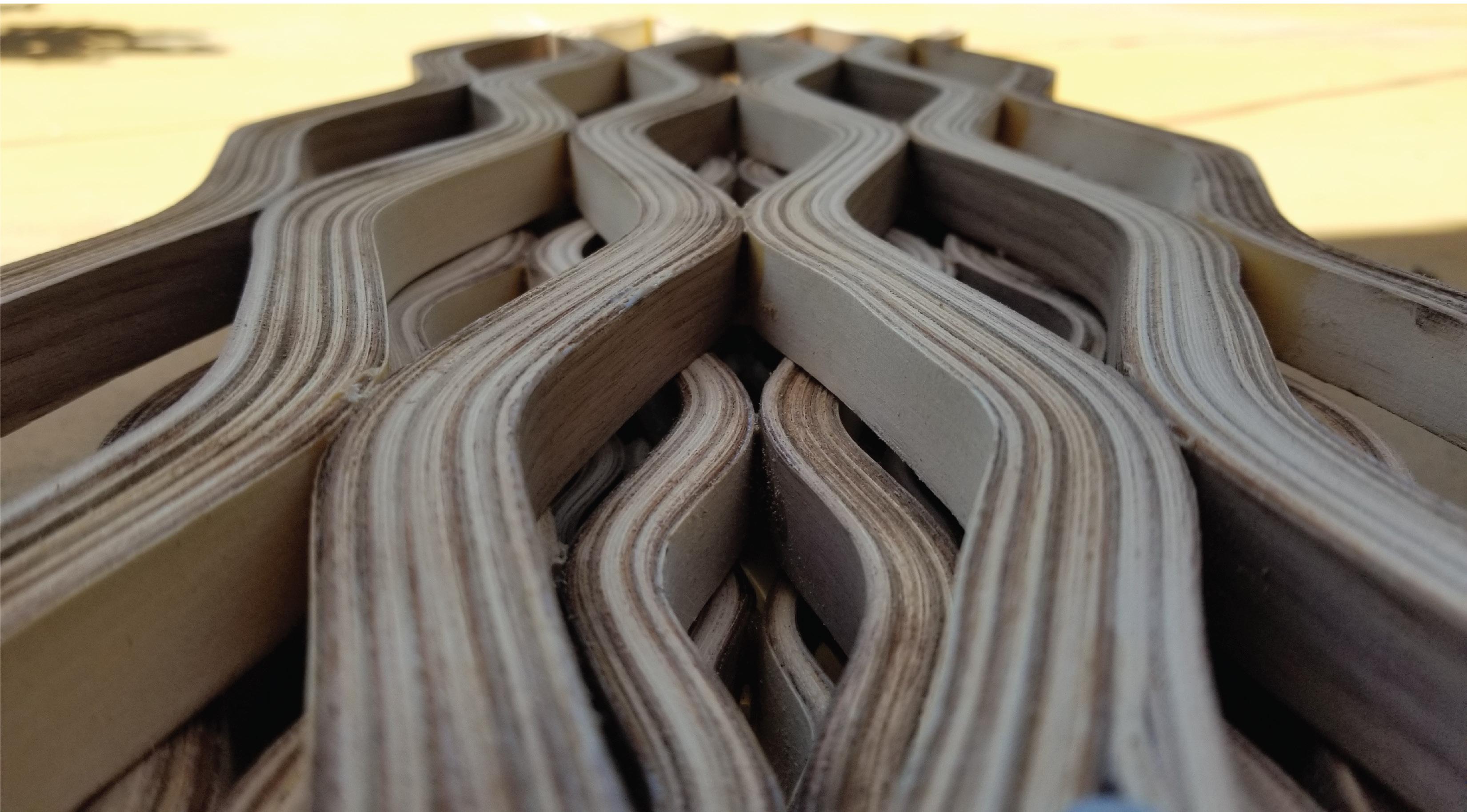


Thank you
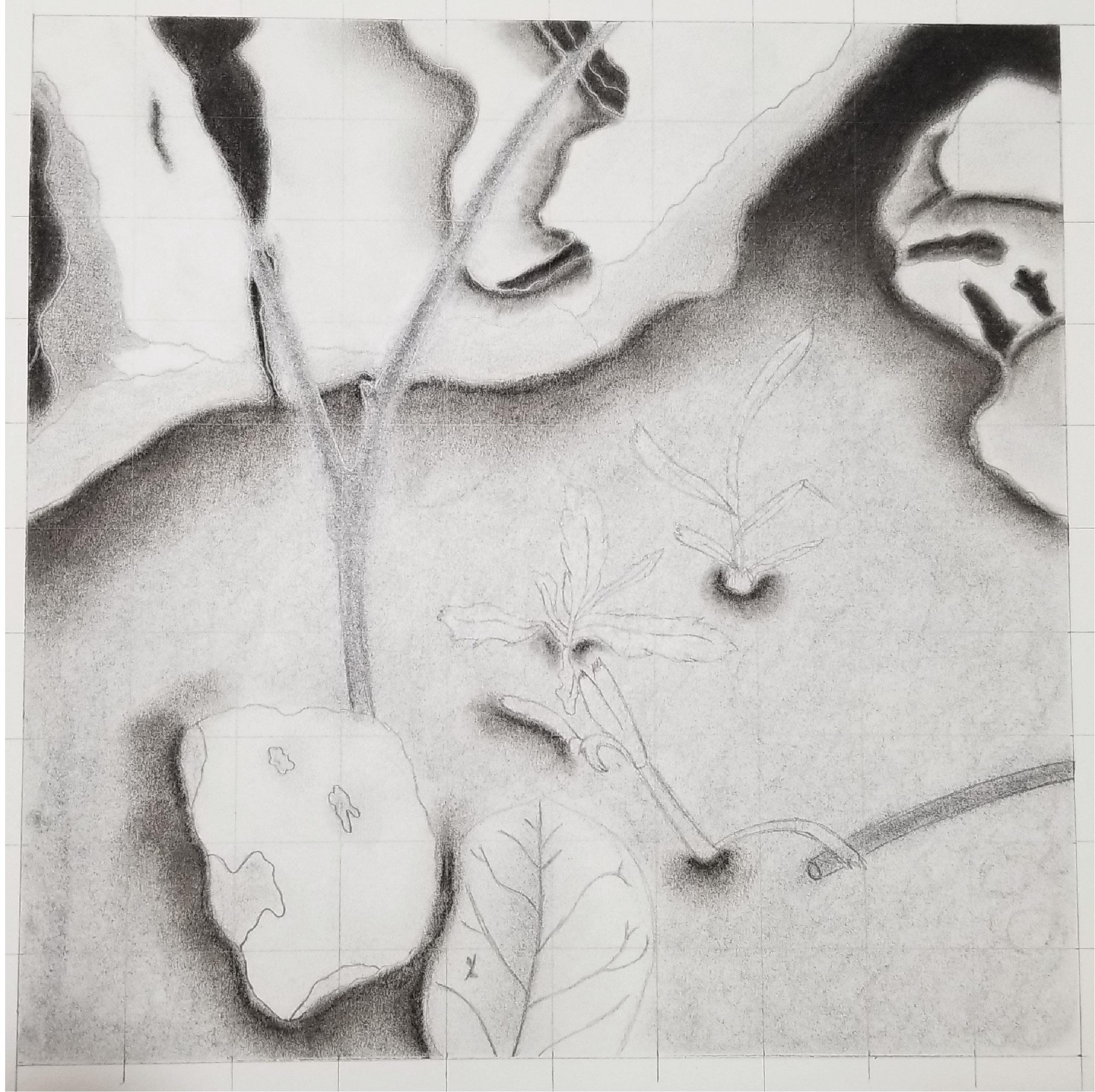




 1. Elysian Park - Near Dodger Stadium
1. Joshua Tree - Information Plaque
4. MacArthur Park - Westlake
4. Itteration Models
2. Crocker Plaza - USC
2. Hand Drawn Planting Plan
5. Community Garden and Housing - Jefferson
5. Bridge
5. Organic and CNC Chair
3. Fire Station - Mulholland Rd
3. Plaster Cast
6. Haboobs and Tule Fog - Central Valley
6. Toy / Play Chest
6. Skateboard
1. Elysian Park - Near Dodger Stadium
1. Joshua Tree - Information Plaque
4. MacArthur Park - Westlake
4. Itteration Models
2. Crocker Plaza - USC
2. Hand Drawn Planting Plan
5. Community Garden and Housing - Jefferson
5. Bridge
5. Organic and CNC Chair
3. Fire Station - Mulholland Rd
3. Plaster Cast
6. Haboobs and Tule Fog - Central Valley
6. Toy / Play Chest
6. Skateboard



 Photo-work
Photo-work











































 Fish Calender
Fish Calender









 Walking Path to “Pool” Lake
Boardwalk to “Fishing” Lake
Walking Path to “Pool” Lake
Boardwalk to “Fishing” Lake














 Aroussiak Gabrielian
Aroussiak Gabrielian





























































